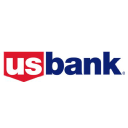VLYPP

Valley National Bancorp
VLYPP
(3.0)24,89 USD
0.63% ROA
4.95% ROE
11.74x PER
4.455.692.500,00 USD
50.25% DER
5.03% Yield
10.84% NPM
Valley National Bancorp Stock Analysis
Valley National Bancorp Fundamental Analysis
Fundamental analysis in stock investing is like studying the foundation of a house before buying it. It involves looking at a company's financial health, like its earnings, assets, and debts, to determine if it's a good investment based on its fundamental strength and potential for growth.
| # | Analysis | Rating |
|---|---|---|
| 1 |
PBV
The stock's low PBV ratio (0.68x) suggests it's undervalued, making it an attractive opportunity for investors. |
|
| 2 |
DER
The stock has a low debt to equity ratio (43%), which means it has a small amount of debt compared to the ownership it holds |
|
| 3 |
Assets Growth
This company's revenue has experienced steady growth over the last five years, indicating a reliable and prosperous financial trajectory. |
|
| 4 |
Dividend
With a solid track record of dividend payments over the past five years, the company has established itself as a dependable choice for investors seeking consistent income. |
|
| 5 |
ROE
The stock's ROE falls within an average range (9.26%), demonstrating satisfactory profitability and efficiency in utilizing shareholders' equity. |
|
| 6 |
ROA
The stock's ROA (1.02%) indicates that it's doing well in making money from the things it owns. This makes it a good option to invest and make consistent profits. |
|
| 7 |
Graham Number
The company's Graham number suggests that its stock price is underestimated, implying that it may present a compelling investment opportunity. |
|
| 8 |
Buffet Intrinsic Value
Based on Warren Buffett's formula, the company's stock appears undervalued (30), presenting an attractive investment chance with its intrinsic value surpassing the current market price. |
|
| 9 |
Revenue Growth
Regrettably, this company's revenue has shown no signs of growth over the past three years, suggesting limited potential for returns and making it a less appealing choice. |
|
| 10 |
Net Profit Growth
Despite the passage of five years, this company's net profit has not shown any improvement, highlighting a lack of growth and making it a less appealing investment prospect. |
|
| 11 |
Dividend Growth
Investors should note the company's stagnant dividend growth over the past three years, indicating limited profitability and potentially diminishing returns. |
Valley National Bancorp Technical Analysis
Technical analysis in stock investing is like reading the patterns on a weather map to predict future weather conditions. It involves studying past stock price movements and trading volumes to make predictions about where a stock's price might go next, without necessarily looking at the company's financial health.
| # | Analysis | Recommendation |
|---|---|---|
| 1 | Awesome Oscillator | Hold |
| 2 | MACD | Buy |
| 3 | RSI | Hold |
| 4 | Stoch RSI | Sell |
Valley National Bancorp Price Chart
Financial Statements
Financial statements are like report cards for companies. They show how much money a company makes (income statement), what it owns and owes (balance sheet), and where it spends its money (cash flow statement), helping stock investors understand if a company is healthy and worth investing in.
Income Statements
An income statement for a company is like a scoreboard for its profits and losses. It shows how much money the company made (revenue) and how much it spent to make that money (expenses), helping stock investors see if a company is making a profit or not.
Revenue in stock investing is the total amount of money a company earns from its sales, and it's a key factor that investors consider to assess a company's financial performance and growth potential.
| Year | Revenue | Growth |
|---|---|---|
| 1985 | 0 | |
| 1986 | 0 | 0% |
| 1987 | 0 | 0% |
| 1988 | 0 | 0% |
| 1989 | 83.400.000 | 100% |
| 1990 | 88.500.000 | 5.76% |
| 1991 | 103.500.000 | 14.49% |
| 1992 | 143.800.000 | 28.03% |
| 1993 | 161.200.000 | 10.79% |
| 1994 | 171.600.000 | 6.06% |
| 1995 | 194.400.000 | 11.73% |
| 1996 | 205.100.000 | 5.22% |
| 1997 | 254.600.000 | 19.44% |
| 1998 | 272.700.000 | 6.64% |
| 1999 | 305.700.000 | 10.79% |
| 2000 | 308.980.000 | 1.06% |
| 2001 | 403.309.000 | 23.39% |
| 2002 | 440.934.000 | 8.53% |
| 2003 | 456.773.000 | 3.47% |
| 2004 | 456.647.000 | -0.03% |
| 2005 | 472.133.000 | 3.28% |
| 2006 | 459.337.000 | -2.79% |
| 2007 | 467.965.000 | 1.84% |
| 2008 | 424.055.000 | -10.35% |
| 2009 | 521.565.000 | 18.7% |
| 2010 | 554.079.000 | 5.87% |
| 2011 | 587.108.000 | 5.63% |
| 2012 | 610.827.000 | 3.88% |
| 2013 | 576.373.000 | -5.98% |
| 2014 | 552.373.000 | -4.34% |
| 2015 | 634.071.000 | 12.88% |
| 2016 | 721.374.000 | 12.1% |
| 2017 | 771.753.000 | 6.53% |
| 2018 | 991.255.000 | 22.14% |
| 2019 | 1.112.568.000 | 10.9% |
| 2020 | 1.301.301.000 | 14.5% |
| 2021 | 1.365.177.000 | 4.68% |
| 2022 | 1.861.952.000 | 26.68% |
| 2023 | 1.854.864.000 | -0.38% |
| 2023 | 1.823.014.000 | -1.75% |
| 2024 | 3.524.724.000 | 48.28% |
Research and Development Expenses are the costs a company incurs to create and improve its products or services, which can be important for investors to evaluate a company's innovation and potential for future growth.
| Year | Research and Development Expenses | Growth |
|---|---|---|
| 1985 | 0 | |
| 1986 | 0 | 0% |
| 1987 | 0 | 0% |
| 1988 | 0 | 0% |
| 1989 | 0 | 0% |
| 1990 | 0 | 0% |
| 1991 | 0 | 0% |
| 1992 | 0 | 0% |
| 1993 | 0 | 0% |
| 1994 | 0 | 0% |
| 1995 | 0 | 0% |
| 1996 | 0 | 0% |
| 1997 | 0 | 0% |
| 1998 | 0 | 0% |
| 1999 | 0 | 0% |
| 2000 | 0 | 0% |
| 2001 | 0 | 0% |
| 2002 | 0 | 0% |
| 2003 | 0 | 0% |
| 2004 | 0 | 0% |
| 2005 | 0 | 0% |
| 2006 | 0 | 0% |
| 2007 | 0 | 0% |
| 2008 | 0 | 0% |
| 2009 | 0 | 0% |
| 2010 | 0 | 0% |
| 2011 | 0 | 0% |
| 2012 | 0 | 0% |
| 2013 | 0 | 0% |
| 2014 | 0 | 0% |
| 2015 | 0 | 0% |
| 2016 | 0 | 0% |
| 2017 | 0 | 0% |
| 2018 | 0 | 0% |
| 2019 | 0 | 0% |
| 2020 | 0 | 0% |
| 2021 | 0 | 0% |
| 2022 | 0 | 0% |
| 2023 | 0 | 0% |
| 2023 | 0 | 0% |
| 2024 | 0 | 0% |
General and Administrative Expenses are the costs a company incurs to run its day-to-day operations, such as office rent, salaries, and utilities, which investors consider to understand a company's overall efficiency and management effectiveness.
| Year | General and Administrative Expenses | Growth |
|---|---|---|
| 1985 | 0 | |
| 1986 | 0 | 0% |
| 1987 | 0 | 0% |
| 1988 | 0 | 0% |
| 1989 | 18.400.000 | 100% |
| 1990 | 19.000.000 | 3.16% |
| 1991 | 23.100.000 | 17.75% |
| 1992 | 30.000.000 | 23% |
| 1993 | 32.400.000 | 7.41% |
| 1994 | 39.100.000 | 17.14% |
| 1995 | 43.200.000 | 9.49% |
| 1996 | 45.100.000 | 4.21% |
| 1997 | 55.700.000 | 19.03% |
| 1998 | 64.100.000 | 13.1% |
| 1999 | 72.000.000 | 10.97% |
| 2000 | 76.621.000 | 6.03% |
| 2001 | 98.026.000 | 21.84% |
| 2002 | 105.886.000 | 7.42% |
| 2003 | 119.359.000 | 11.29% |
| 2004 | 123.790.000 | 3.58% |
| 2005 | 132.151.000 | 6.33% |
| 2006 | 138.367.000 | 4.49% |
| 2007 | 145.650.000 | 5% |
| 2008 | 157.876.000 | 7.74% |
| 2009 | 183.874.000 | 14.14% |
| 2010 | 189.825.000 | 3.13% |
| 2011 | 189.066.000 | -0.4% |
| 2012 | 214.260.000 | 11.76% |
| 2013 | 211.177.000 | -1.46% |
| 2014 | 207.540.000 | -1.75% |
| 2015 | 238.632.000 | 13.03% |
| 2016 | 255.953.000 | 6.77% |
| 2017 | 274.390.000 | 6.72% |
| 2018 | 362.082.000 | 24.22% |
| 2019 | 349.141.000 | -3.71% |
| 2020 | 352.170.000 | 0.86% |
| 2021 | 390.048.000 | 9.71% |
| 2022 | 549.573.000 | 29.03% |
| 2023 | 536.152.000 | -2.5% |
| 2023 | 77.027.000 | -596.06% |
| 2024 | 615.592.000 | 87.49% |
EBITDA stands for Earnings Before Interest, Taxes, Depreciation, and Amortization. It is a measure that helps stock investors analyze a company's profitability by looking at its earnings without considering certain expenses. This helps to get a clearer picture of the company's financial performance and its ability to generate cash flow.
| Year | EBITDA | Growth |
|---|---|---|
| 1985 | 23.300.000 | |
| 1986 | 28.500.000 | 18.25% |
| 1987 | 30.400.000 | 6.25% |
| 1988 | 32.300.000 | 5.88% |
| 1989 | 0 | 0% |
| 1990 | 0 | 0% |
| 1991 | 0 | 0% |
| 1992 | 0 | 0% |
| 1993 | 0 | 0% |
| 1994 | 0 | 0% |
| 1995 | 0 | 0% |
| 1996 | 0 | 0% |
| 1997 | 0 | 0% |
| 1998 | 0 | 0% |
| 1999 | 0 | 0% |
| 2000 | 0 | 0% |
| 2001 | 0 | 0% |
| 2002 | 0 | 0% |
| 2003 | 0 | 0% |
| 2004 | 322.164.000 | 100% |
| 2005 | 341.388.000 | 5.63% |
| 2006 | 338.232.000 | -0.93% |
| 2007 | 343.012.000 | 1.39% |
| 2008 | 268.030.000 | -27.98% |
| 2009 | 330.295.000 | 18.85% |
| 2010 | 237.327.000 | -39.17% |
| 2011 | 220.912.000 | -7.43% |
| 2012 | 238.635.000 | 7.43% |
| 2013 | 0 | 0% |
| 2014 | 0 | 0% |
| 2015 | 0 | 0% |
| 2016 | 269.138.000 | 100% |
| 2017 | 0 | 0% |
| 2018 | 0 | 0% |
| 2019 | 528.192.000 | 100% |
| 2020 | 612.326.000 | 13.74% |
| 2021 | 685.197.000 | 10.64% |
| 2022 | 728.865.000 | 5.99% |
| 2023 | 818.292.000 | 10.93% |
| 2023 | 0 | 0% |
| 2024 | -108.488.000 | 100% |
Gross profit is the money a company makes from selling its products or services after subtracting the cost of producing or providing them, and it is an important measure for investors to understand a company's profitability.
| Year | Gross Profit | Growth |
|---|---|---|
| 1985 | 0 | |
| 1986 | 0 | 0% |
| 1987 | 0 | 0% |
| 1988 | 0 | 0% |
| 1989 | 83.400.000 | 100% |
| 1990 | 88.500.000 | 5.76% |
| 1991 | 103.500.000 | 14.49% |
| 1992 | 143.800.000 | 28.03% |
| 1993 | 161.200.000 | 10.79% |
| 1994 | 171.600.000 | 6.06% |
| 1995 | 194.400.000 | 11.73% |
| 1996 | 205.100.000 | 5.22% |
| 1997 | 254.600.000 | 19.44% |
| 1998 | 272.700.000 | 6.64% |
| 1999 | 305.700.000 | 10.79% |
| 2000 | 308.980.000 | 1.06% |
| 2001 | 403.309.000 | 23.39% |
| 2002 | 440.934.000 | 8.53% |
| 2003 | 456.773.000 | 3.47% |
| 2004 | 456.647.000 | -0.03% |
| 2005 | 472.133.000 | 3.28% |
| 2006 | 459.337.000 | -2.79% |
| 2007 | 467.965.000 | 1.84% |
| 2008 | 423.638.000 | -10.46% |
| 2009 | 521.565.000 | 18.78% |
| 2010 | 554.079.000 | 5.87% |
| 2011 | 587.108.000 | 5.63% |
| 2012 | 610.827.000 | 3.88% |
| 2013 | 576.373.000 | -5.98% |
| 2014 | 552.373.000 | -4.34% |
| 2015 | 634.071.000 | 12.88% |
| 2016 | 721.374.000 | 12.1% |
| 2017 | 771.753.000 | 6.53% |
| 2018 | 991.255.000 | 22.14% |
| 2019 | 1.112.568.000 | 10.9% |
| 2020 | 1.301.301.000 | 14.5% |
| 2021 | 1.365.177.000 | 4.68% |
| 2022 | 1.861.952.000 | 26.68% |
| 2023 | 1.854.864.000 | -0.38% |
| 2023 | 1.823.014.000 | -1.75% |
| 2024 | 3.538.724.000 | 48.48% |
Net income in stock investing is like the money a company actually gets to keep as profit after paying all its bills, and it's an important measure to understand how well a company is doing financially.
| Year | Net Profit | Growth |
|---|---|---|
| 1985 | 23.300.000 | |
| 1986 | 28.500.000 | 18.25% |
| 1987 | 30.400.000 | 6.25% |
| 1988 | 32.300.000 | 5.88% |
| 1989 | 33.900.000 | 4.72% |
| 1990 | 27.100.000 | -25.09% |
| 1991 | 30.100.000 | 9.97% |
| 1992 | 41.600.000 | 27.64% |
| 1993 | 54.200.000 | 23.25% |
| 1994 | 59.000.000 | 8.14% |
| 1995 | 62.600.000 | 5.75% |
| 1996 | 67.500.000 | 7.26% |
| 1997 | 85.000.000 | 20.59% |
| 1998 | 97.300.000 | 12.64% |
| 1999 | 106.300.000 | 8.47% |
| 2000 | 106.773.000 | 0.44% |
| 2001 | 135.204.000 | 21.03% |
| 2002 | 154.616.000 | 12.55% |
| 2003 | 153.415.000 | -0.78% |
| 2004 | 154.398.000 | 0.64% |
| 2005 | 163.449.000 | 5.54% |
| 2006 | 163.691.000 | 0.15% |
| 2007 | 153.228.000 | -6.83% |
| 2008 | 93.591.000 | -63.72% |
| 2009 | 116.061.000 | 19.36% |
| 2010 | 131.170.000 | 11.52% |
| 2011 | 133.653.000 | 1.86% |
| 2012 | 143.627.000 | 6.94% |
| 2013 | 131.961.000 | -8.84% |
| 2014 | 116.172.000 | -13.59% |
| 2015 | 102.957.000 | -12.84% |
| 2016 | 168.146.000 | 38.77% |
| 2017 | 161.907.000 | -3.85% |
| 2018 | 261.428.000 | 38.07% |
| 2019 | 309.793.000 | 15.61% |
| 2020 | 390.606.000 | 20.69% |
| 2021 | 473.840.000 | 17.57% |
| 2022 | 568.851.000 | 16.7% |
| 2023 | 565.384.000 | -0.61% |
| 2023 | 498.511.000 | -13.41% |
| 2024 | 281.696.000 | -76.97% |
EPS, or earnings per share, is a measure that shows how much profit a company has earned for each outstanding share of its stock, and it is important for stock investors as it helps understand the profitability of a company and compare it with other companies in the market.
| Year | Earning per Share (EPS) | Growth |
|---|---|---|
| 1985 | 0 | |
| 1986 | 0 | 0% |
| 1987 | 0 | 0% |
| 1988 | 0 | 0% |
| 1989 | 0 | 0% |
| 1990 | 0 | 0% |
| 1991 | 1 | 0% |
| 1992 | 0 | 0% |
| 1993 | 1 | 0% |
| 1994 | 1 | 0% |
| 1995 | 1 | 0% |
| 1996 | 1 | 0% |
| 1997 | 1 | 0% |
| 1998 | 1 | 0% |
| 1999 | 1 | 0% |
| 2000 | 1 | 0% |
| 2001 | 1 | 0% |
| 2002 | 1 | 100% |
| 2003 | 1 | 0% |
| 2004 | 1 | 0% |
| 2005 | 1 | 0% |
| 2006 | 1 | 0% |
| 2007 | 1 | 0% |
| 2008 | 1 | 0% |
| 2009 | 1 | 0% |
| 2010 | 1 | 0% |
| 2011 | 1 | 0% |
| 2012 | 1 | 0% |
| 2013 | 1 | 0% |
| 2014 | 1 | 0% |
| 2015 | 0 | 0% |
| 2016 | 1 | 0% |
| 2017 | 1 | 0% |
| 2018 | 1 | 0% |
| 2019 | 1 | 0% |
| 2020 | 1 | 0% |
| 2021 | 1 | 100% |
| 2022 | 1 | 0% |
| 2023 | 1 | 0% |
| 2023 | 1 | 0% |
| 2024 | 1 | 0% |
Cashflow Statements
Cashflow statements show the movement of money in and out of a company, helping stock investors understand how much money a company makes and spends. By examining cashflow statements, investors can assess if a company is generating enough cash to pay its bills, invest in growth, and provide returns to stockholders.
Free cash flow is the leftover cash that a company generates after covering its operating expenses and capital expenditures, which is important for stock investors as it shows how much money a company has available to invest in growth, pay dividends, or reduce debt.
| Year | Free Cashflow | Growth |
|---|---|---|
| 1989 | 34.400.000 | |
| 1990 | 26.100.000 | -31.8% |
| 1991 | 248.000.000 | 89.48% |
| 1992 | 148.400.000 | -67.12% |
| 1993 | 65.800.000 | -125.53% |
| 1994 | 63.200.000 | -4.11% |
| 1995 | 71.000.000 | 10.99% |
| 1996 | 114.000.000 | 37.72% |
| 1997 | 149.800.000 | 23.9% |
| 1998 | 293.700.000 | 49% |
| 1999 | 203.800.000 | -44.11% |
| 2000 | 107.857.000 | -88.95% |
| 2001 | 150.808.000 | 28.48% |
| 2002 | -330.869.000 | 145.58% |
| 2003 | 197.088.000 | 267.88% |
| 2004 | 115.724.000 | -70.31% |
| 2005 | 88.826.000 | -30.28% |
| 2006 | 185.563.000 | 52.13% |
| 2007 | 963.998.000 | 80.75% |
| 2008 | 908.223.000 | -6.14% |
| 2009 | 79.271.000 | -1045.72% |
| 2010 | 264.415.000 | 70.02% |
| 2011 | 174.935.000 | -51.15% |
| 2012 | 300.576.000 | 41.8% |
| 2013 | 270.512.000 | -11.11% |
| 2014 | -572.826.000 | 147.22% |
| 2015 | -1.611.828.000 | 64.46% |
| 2016 | 398.470.000 | 504.5% |
| 2017 | 601.113.000 | 33.71% |
| 2018 | -2.683.004.000 | 122.4% |
| 2019 | -989.291.000 | -171.2% |
| 2020 | 126.918.000 | 879.47% |
| 2021 | -225.802.000 | 156.21% |
| 2022 | 1.359.544.000 | 116.61% |
| 2023 | 374.095.000 | -263.42% |
| 2023 | 291.792.000 | -28.21% |
| 2024 | 203.359.000 | -43.49% |
Operating cash flow represents the cash generated or consumed by a company's day-to-day operations, excluding external investing or financing activities, and is crucial for stock investors as it shows how much cash a company is generating from its core business operations.
| Year | Operating Cashflow | Growth |
|---|---|---|
| 1989 | 36.300.000 | |
| 1990 | 33.400.000 | -8.68% |
| 1991 | 250.300.000 | 86.66% |
| 1992 | 158.700.000 | -57.72% |
| 1993 | 74.100.000 | -114.17% |
| 1994 | 69.100.000 | -7.24% |
| 1995 | 83.400.000 | 17.15% |
| 1996 | 125.800.000 | 33.7% |
| 1997 | 161.700.000 | 22.2% |
| 1998 | 304.300.000 | 46.86% |
| 1999 | 213.400.000 | -42.6% |
| 2000 | 117.206.000 | -82.07% |
| 2001 | 162.536.000 | 27.89% |
| 2002 | 113.825.000 | -42.79% |
| 2003 | 223.229.000 | 49.01% |
| 2004 | 161.565.000 | -38.17% |
| 2005 | 116.093.000 | -39.17% |
| 2006 | 230.653.000 | 49.67% |
| 2007 | 981.389.000 | 76.5% |
| 2008 | 938.100.000 | -4.61% |
| 2009 | 104.553.000 | -797.25% |
| 2010 | 279.014.000 | 62.53% |
| 2011 | 191.337.000 | -45.82% |
| 2012 | 323.311.000 | 40.82% |
| 2013 | 285.364.000 | -13.3% |
| 2014 | 183.976.000 | -55.11% |
| 2015 | 154.929.000 | -18.75% |
| 2016 | 419.177.000 | 63.04% |
| 2017 | 619.230.000 | 32.31% |
| 2018 | 593.589.000 | -4.32% |
| 2019 | 1.463.950.000 | 59.45% |
| 2020 | 151.525.000 | -866.14% |
| 2021 | 837.142.000 | 81.9% |
| 2022 | 1.428.479.000 | 41.4% |
| 2023 | 374.095.000 | -281.85% |
| 2023 | 367.838.000 | -1.7% |
| 2024 | 206.098.000 | -78.48% |
Capex, short for capital expenditures, refers to the money a company spends on acquiring or upgrading tangible assets like buildings, equipment, or technology, which is important for stock investors as it indicates how much a company is investing in its infrastructure to support future growth and profitability.
| Year | Capital Expenditure | Growth |
|---|---|---|
| 1989 | 1.900.000 | |
| 1990 | 7.300.000 | 73.97% |
| 1991 | 2.300.000 | -217.39% |
| 1992 | 10.300.000 | 77.67% |
| 1993 | 8.300.000 | -24.1% |
| 1994 | 5.900.000 | -40.68% |
| 1995 | 12.400.000 | 52.42% |
| 1996 | 11.800.000 | -5.08% |
| 1997 | 11.900.000 | 0.84% |
| 1998 | 10.600.000 | -12.26% |
| 1999 | 9.600.000 | -10.42% |
| 2000 | 9.349.000 | -2.68% |
| 2001 | 11.728.000 | 20.28% |
| 2002 | 444.694.000 | 97.36% |
| 2003 | 26.141.000 | -1601.14% |
| 2004 | 45.841.000 | 42.97% |
| 2005 | 27.267.000 | -68.12% |
| 2006 | 45.090.000 | 39.53% |
| 2007 | 17.391.000 | -159.27% |
| 2008 | 29.877.000 | 41.79% |
| 2009 | 25.282.000 | -18.17% |
| 2010 | 14.599.000 | -73.18% |
| 2011 | 16.402.000 | 10.99% |
| 2012 | 22.735.000 | 27.86% |
| 2013 | 14.852.000 | -53.08% |
| 2014 | 756.802.000 | 98.04% |
| 2015 | 1.766.757.000 | 57.16% |
| 2016 | 20.707.000 | -8432.17% |
| 2017 | 18.117.000 | -14.3% |
| 2018 | 3.276.593.000 | 99.45% |
| 2019 | 2.453.241.000 | -33.56% |
| 2020 | 24.607.000 | -9869.69% |
| 2021 | 1.062.944.000 | 97.69% |
| 2022 | 68.935.000 | -1441.95% |
| 2023 | 0 | 0% |
| 2023 | 76.046.000 | 100% |
| 2024 | 2.739.000 | -2676.41% |
Balance Sheet
Balance sheets provide a snapshot of a company's financial health and its assets (such as cash, inventory, and property) and liabilities (like debts and obligations) at a specific point in time. For stock investors, balance sheets help assess the company's overall worth and evaluate its ability to meet financial obligations and support future growth.
Equity refers to the ownership interest or stake that shareholders have in a company, representing their claim on its assets and earnings after all debts and liabilities are paid.
| Year | Equity | Growth |
|---|---|---|
| 1989 | 171.500.000 | |
| 1990 | 180.600.000 | 5.04% |
| 1991 | 194.500.000 | 7.15% |
| 1992 | 218.300.000 | 10.9% |
| 1993 | 264.400.000 | 17.44% |
| 1994 | 300.200.000 | 11.93% |
| 1995 | 400.200.000 | 24.99% |
| 1996 | 396.500.000 | -0.93% |
| 1997 | 475.400.000 | 16.6% |
| 1998 | 555.800.000 | 14.47% |
| 1999 | 553.500.000 | -0.42% |
| 2000 | 545.074.000 | -1.55% |
| 2001 | 678.375.000 | 19.65% |
| 2002 | 631.738.000 | -7.38% |
| 2003 | 652.789.000 | 3.22% |
| 2004 | 707.598.000 | 7.75% |
| 2005 | 931.910.000 | 24.07% |
| 2006 | 949.590.000 | 1.86% |
| 2007 | 949.060.000 | -0.06% |
| 2008 | 1.363.609.000 | 30.4% |
| 2009 | 1.252.854.000 | -8.84% |
| 2010 | 1.295.205.000 | 3.27% |
| 2011 | 1.266.248.000 | -2.29% |
| 2012 | 1.502.377.000 | 15.72% |
| 2013 | 1.541.040.000 | 2.51% |
| 2014 | 1.863.017.000 | 17.28% |
| 2015 | 2.207.091.000 | 15.59% |
| 2016 | 2.377.156.000 | 7.15% |
| 2017 | 2.533.165.000 | 6.16% |
| 2018 | 3.350.454.000 | 24.39% |
| 2019 | 4.384.188.000 | 23.58% |
| 2020 | 4.592.120.000 | 4.53% |
| 2021 | 5.084.066.000 | 9.68% |
| 2022 | 6.400.802.000 | 20.57% |
| 2023 | 6.627.299.000 | 3.42% |
| 2023 | 6.701.391.000 | 1.11% |
| 2024 | 6.737.737.000 | 0.54% |
Assets represent the valuable resources that a company owns, such as cash, inventory, property, and equipment, and understanding a company's assets helps investors assess its value and potential for generating future profits.
| Year | Assets | Growth |
|---|---|---|
| 1989 | 1.823.400.000 | |
| 1990 | 2.004.200.000 | 9.02% |
| 1991 | 2.864.900.000 | 30.04% |
| 1992 | 3.169.800.000 | 9.62% |
| 1993 | 3.413.500.000 | 7.14% |
| 1994 | 3.743.900.000 | 8.83% |
| 1995 | 4.585.800.000 | 18.36% |
| 1996 | 4.686.700.000 | 2.15% |
| 1997 | 5.090.700.000 | 7.94% |
| 1998 | 5.541.200.000 | 8.13% |
| 1999 | 6.360.400.000 | 12.88% |
| 2000 | 6.425.837.000 | 1.02% |
| 2001 | 8.583.765.000 | 25.14% |
| 2002 | 9.134.674.000 | 6.03% |
| 2003 | 9.880.740.000 | 7.55% |
| 2004 | 10.763.391.000 | 8.2% |
| 2005 | 12.436.102.000 | 13.45% |
| 2006 | 12.395.027.000 | -0.33% |
| 2007 | 12.748.959.000 | 2.78% |
| 2008 | 14.718.129.000 | 13.38% |
| 2009 | 14.284.153.000 | -3.04% |
| 2010 | 14.143.826.000 | -0.99% |
| 2011 | 14.244.507.000 | 0.71% |
| 2012 | 16.012.646.000 | 11.04% |
| 2013 | 16.156.541.000 | 0.89% |
| 2014 | 18.793.855.000 | 14.03% |
| 2015 | 21.612.616.000 | 13.04% |
| 2016 | 22.864.439.000 | 5.47% |
| 2017 | 24.002.306.000 | 4.74% |
| 2018 | 31.863.088.000 | 24.67% |
| 2019 | 37.453.416.000 | 14.93% |
| 2020 | 40.686.076.000 | 7.95% |
| 2021 | 43.446.443.000 | 6.35% |
| 2022 | 57.462.749.000 | 24.39% |
| 2023 | 61.183.352.000 | 6.08% |
| 2023 | 61.055.286.000 | -0.21% |
| 2024 | 62.058.974.000 | 1.62% |
Liabilities refer to the financial obligations or debts that a company owes to creditors or external parties, and understanding a company's liabilities is important for investors as it helps assess the company's financial risk and ability to meet its obligations.
| Year | Liabilities | Growth |
|---|---|---|
| 1989 | 1.651.900.000 | |
| 1990 | 1.823.600.000 | 9.42% |
| 1991 | 2.670.400.000 | 31.71% |
| 1992 | 2.951.500.000 | 9.52% |
| 1993 | 3.149.100.000 | 6.27% |
| 1994 | 3.443.700.000 | 8.55% |
| 1995 | 4.185.600.000 | 17.73% |
| 1996 | 4.290.200.000 | 2.44% |
| 1997 | 4.615.300.000 | 7.04% |
| 1998 | 4.985.400.000 | 7.42% |
| 1999 | 5.806.900.000 | 14.15% |
| 2000 | 5.880.763.000 | 1.26% |
| 2001 | 7.905.390.000 | 25.61% |
| 2002 | 8.502.936.000 | 7.03% |
| 2003 | 9.227.951.000 | 7.86% |
| 2004 | 10.055.793.000 | 8.23% |
| 2005 | 11.504.192.000 | 12.59% |
| 2006 | 11.445.437.000 | -0.51% |
| 2007 | 11.799.899.000 | 3% |
| 2008 | 13.354.520.000 | 11.64% |
| 2009 | 13.031.299.000 | -2.48% |
| 2010 | 12.848.621.000 | -1.42% |
| 2011 | 12.978.259.000 | 1% |
| 2012 | 14.510.269.000 | 10.56% |
| 2013 | 14.615.501.000 | 0.72% |
| 2014 | 16.930.838.000 | 13.68% |
| 2015 | 19.405.525.000 | 12.75% |
| 2016 | 20.487.283.000 | 5.28% |
| 2017 | 21.469.141.000 | 4.57% |
| 2018 | 28.512.634.000 | 24.7% |
| 2019 | 33.069.228.000 | 13.78% |
| 2020 | 36.093.956.000 | 8.38% |
| 2021 | 38.362.377.000 | 5.91% |
| 2022 | 51.061.947.000 | 24.87% |
| 2023 | 54.556.053.000 | 6.4% |
| 2023 | 54.353.895.000 | -0.37% |
| 2024 | 55.321.237.000 | 1.75% |
Valley National Bancorp Financial Ratio (TTM)
Valuation Metrics
- Revenue per Share
- 6.09
- Net Income per Share
- 0.75
- Price to Earning Ratio
- 11.74x
- Price To Sales Ratio
- 1.44x
- POCF Ratio
- 11.34
- PFCF Ratio
- 12.38
- Price to Book Ratio
- 0.66
- EV to Sales
- 2.33
- EV Over EBITDA
- 46.53
- EV to Operating CashFlow
- 18.4
- EV to FreeCashFlow
- 20.09
- Earnings Yield
- 0.09
- FreeCashFlow Yield
- 0.08
- Market Cap
- 4,46 Bil.
- Enterprise Value
- 7,23 Bil.
- Graham Number
- 14.9
- Graham NetNet
- -106.03
Income Statement Metrics
- Net Income per Share
- 0.75
- Income Quality
- 1.03
- ROE
- 0.06
- Return On Assets
- 0.01
- Return On Capital Employed
- 0.01
- Net Income per EBT
- 0.77
- EBT Per Ebit
- 0.77
- Ebit per Revenue
- 0.18
- Effective Tax Rate
- 0.23
Margins
- Sales, General, & Administrative to Revenue
- 0.19
- Research & Developement to Revenue
- 0
- Stock Based Compensation to Revenue
- 0.01
- Gross Profit Margin
- 1.15
- Operating Profit Margin
- 0.18
- Pretax Profit Margin
- 0.14
- Net Profit Margin
- 0.11
Dividends
- Dividend Yield
- 0.05
- Dividend Yield %
- 5.03
- Payout Ratio
- 0.63
- Dividend Per Share
- 0.44
Operating Metrics
- Operating Cashflow per Share
- 0.77
- Free CashFlow per Share
- 0.71
- Capex to Operating CashFlow
- 0.08
- Capex to Revenue
- 0.01
- Capex to Depreciation
- 0.41
- Return on Invested Capital
- 0.05
- Return on Tangible Assets
- 0.01
- Days Sales Outstanding
- 29.57
- Days Payables Outstanding
- 0
- Days of Inventory on Hand
- -14275.21
- Receivables Turnover
- 12.34
- Payables Turnover
- 0
- Inventory Turnover
- -0.03
- Capex per Share
- 0.06
Balance Sheet
- Cash per Share
- 2,03
- Book Value per Share
- 13,23
- Tangible Book Value per Share
- 9.28
- Shareholders Equity per Share
- 13.23
- Interest Debt per Share
- 9.21
- Debt to Equity
- 0.5
- Debt to Assets
- 0.05
- Net Debt to EBITDA
- 17.86
- Current Ratio
- 0.11
- Tangible Asset Value
- 4,73 Bil.
- Net Current Asset Value
- -54,05 Bil.
- Invested Capital
- -7429115000
- Working Capital
- -10,14 Bil.
- Intangibles to Total Assets
- 0.03
- Average Receivables
- 0,25 Bil.
- Average Payables
- 0,00 Bil.
- Average Inventory
- -212940500
- Debt to Market Cap
- 0.76
Dividends
Dividends in stock investing are like rewards that companies give to their shareholders. They are a portion of the company's profits distributed to investors, typically in the form of cash payments, as a way for them to share in the company's success.
| Year | Dividends | Growth |
|---|---|---|
| 2018 | 0 | |
| 2019 | 2 | 100% |
| 2020 | 2 | 0% |
| 2021 | 2 | 0% |
| 2022 | 2 | 0% |
| 2023 | 2 | 0% |
| 2024 | 1 | 0% |
Valley National Bancorp Profile
About Valley National Bancorp
Valley National Bancorp operates as the holding company for Valley National Bank that provides various commercial, retail, insurance, and wealth management financial services products. It operates through Commercial Lending, Consumer Lending, and Investment Management segments. The company offers non-interest bearing, savings, NOW, money market, and time deposit accounts; commercial and industrial, commercial real estate, residential mortgage, and automobile loans; loans secured by the cash surrender value of life insurance; home equity loans and lines of credit; and secured and unsecured other consumer loans. It also invests in various securities and interest-bearing deposits with other banks; and provides international banking services, such as standby and documentary letters of credit, and related products, as well as foreign exchange transactions, documentary collections, foreign wire transfers services, and transaction accounts for non-resident aliens. In addition, the company offers investment services for individuals and small to medium sized businesses; and trusts and custom -tailored investment strategies for various retirement plans. Further, it provides trust services, such as living and testamentary trusts, investment management, custodial and escrow services, and estate administration to individuals; tax credit advisory services; property and casualty, life, health, and title insurance agency services; and health care equipment lending and other commercial equipment leasing services, as well as owns real estate related investments. Additionally, the company offers online, mobile, and telephone banking services; and overdraft, drive-in and night deposit, automated teller machine, remote deposit capture, and safe deposit facility services. As of December 31,2021, it operated 232 branch offices in New Jersey, New York, Florida, and Alabama. The company was incorporated in 1927 and is headquartered in New York, New York.
- CEO
- Mr. Ira D. Robbins
- Employee
- 3.749
- Address
-
One Penn Plaza
New York, 10119
Valley National Bancorp Executives & BODs
| # | Name | Age |
|---|---|---|
| 1 |
Mr. Joseph V. Chillura Senior Executive Vice President of Commercial Banking |
70 |
| 2 |
Mr. Russell Barrett Senior EVice President & Chief Operating Officer |
70 |
| 3 |
Mr. Marc Piro Senior Vice President, Head of Content, Creative & Public Relations |
70 |
| 4 |
Ms. Yvonne M. Surowiec Senior EVice President & Chief People Officer |
70 |
| 5 |
Mr. Thomas A. Iadanza President & Chief Banking Officer |
70 |
| 6 |
Mr. Travis P. Lan Head of Investor Relations |
70 |
| 7 |
Mr. Mitchell L. Crandell Executive Vice President & Chief Accounting Officer |
70 |
| 8 |
Ms. Melissa F. Scofield Executive Vice President & Chief Risk Officer |
70 |
| 9 |
Mr. Ira D. Robbins Chairman & Chief Executive Officer |
70 |
| 10 |
Mr. Ronald H. Janis J.D. Senior EVice President, Corporate Secretary & General Counsel |
70 |

















